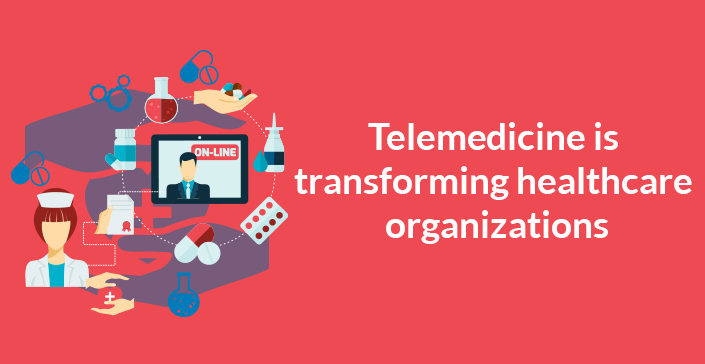Rising cost and inefficiencies within healthcare processes is putting the pressure on healthcare organizations to develop solutions that are cost-effective without compromising patient care quality.
Telemedicine has been heralded as one of the leading solutions that has potential to be a game-changer for the medial field. This format uses video and audio communication technology to deliver long-distance healthcare, patient education and health administration.
Although telemedicine has been spoken about as a vital medium for furthering healthcare delivery, its adoption has been far less than anticipated. A key reason has been that any form of video conferencing has typically required expensive and complicated equipment and software. The cost implications as well as deployment difficulties of such complex infrastructure has restricted the use of this technique.
But technological advancements in recent years may have solved this issue. Extensive use of internet-connected devices like Smartphones and wide access to internet is ensuring that online tools using innovative technology like webRTC can be effectively used for these purposes.
These tools have the necessary capabilities to offer real-time communication that facilities remote consultations, remote patient monitoring and instant data access. So much so that research now suggests that by 2018 over 7 million people worldwide may start using telemedicine technology.
Here are three major ways in which telemedicine can be used to transform healthcare organizations:
- Increased Access and Convenience: For both patients and doctors, using telemedicine brings convenience. Patients have better access to healthcare as it is easier to reach doctors. Medical professionals can use latest tech solutions to carry out follow up video visits and monitor progress without geographical barriers. Tools can be used to view medical records remotely and carry on in-depth discussions via video. This boosts the efficiency of the doctors as they are able to free up precious time, and it saves the patient the trouble of physical travel.
- Reduced Medical Costs: Hospitals can substantially slash operational costs by adopting telemedicine. Remote consulting results in higher productivity, faster service and improved collaboration between all concerned parties. Using telemedicine boosts electronic data tracking and storage which also improves efficiencies. Paperwork related to insurance or billing can be handled through online channels using platforms like cobrowsing avoiding the need for expensive and time-consuming in-person visits.
- Improved Outcomes: Remote consulting using telemedicine improves patient outcomes as there is better and closer tracking of a patient’s health and health data which translates into prompt handling of issues. There is continuity in care as doctors can utilize virtual visits to carry on the monitoring of their patients with minimum time investment. Such remote access tools are particularly suited for those patients who are too ill for travel- elderly, seriously ill or suffering from disabilities.
Telemedicine puts the patient at the center of healthcare services. By offering increased convenience and access, patients find their needs are being met with care and speed. For hospitals, the technology brings better patient engagement, lower operational costs and higher efficiencies for the doctors’ time. No doubt, telemedicine can usher in a transformation for healthcare organizations.

0 Comments
Leave A Comment